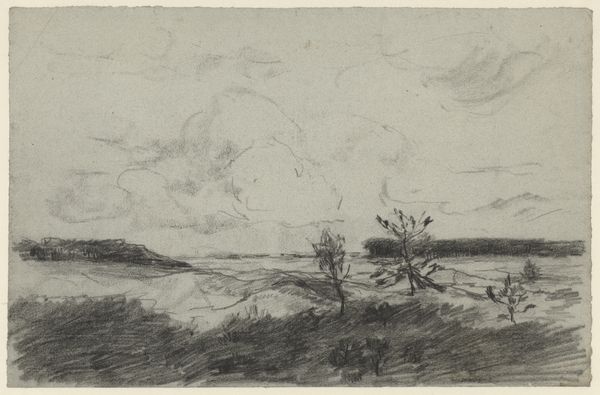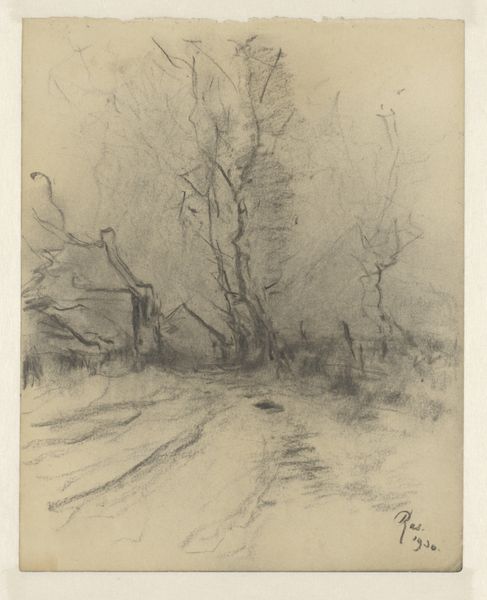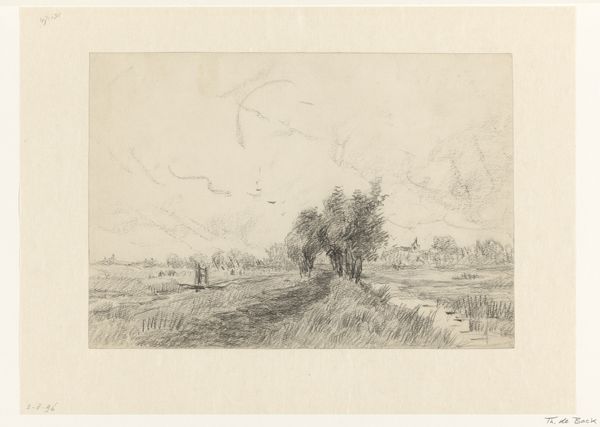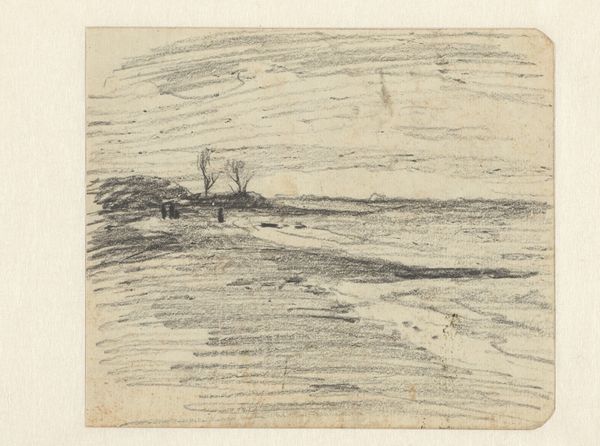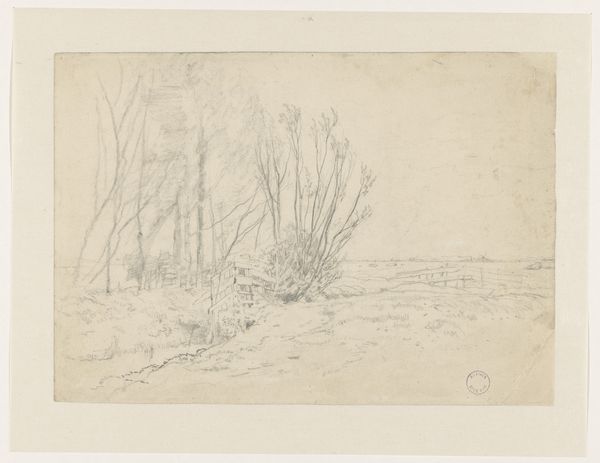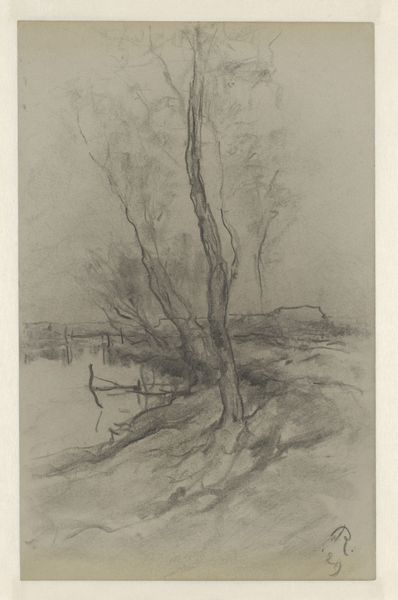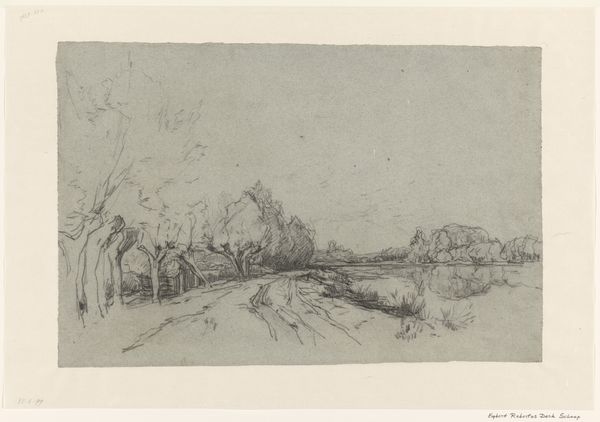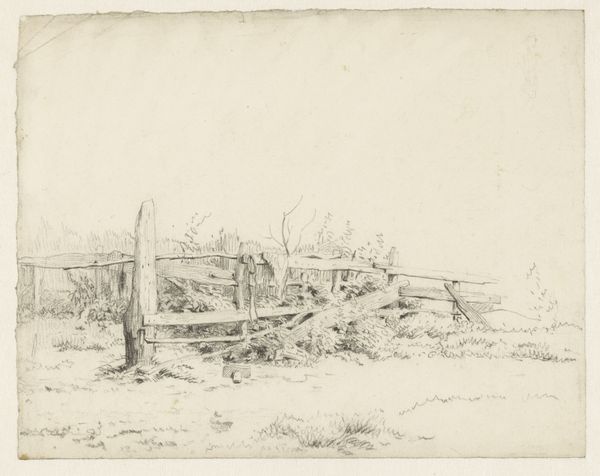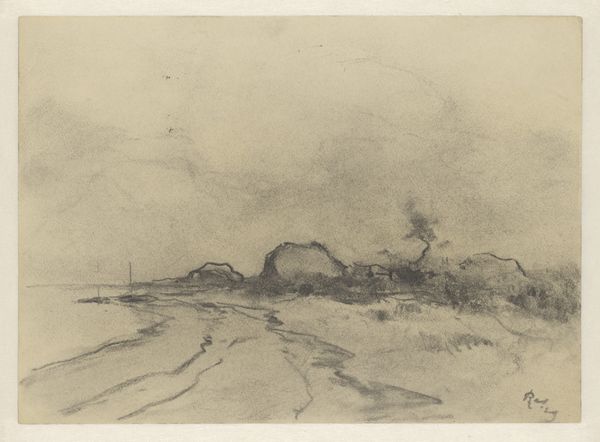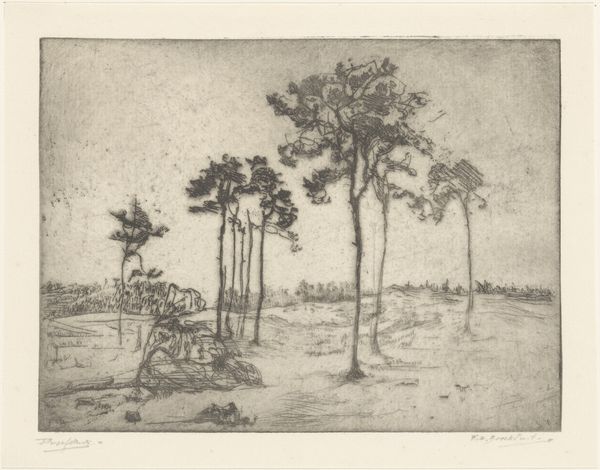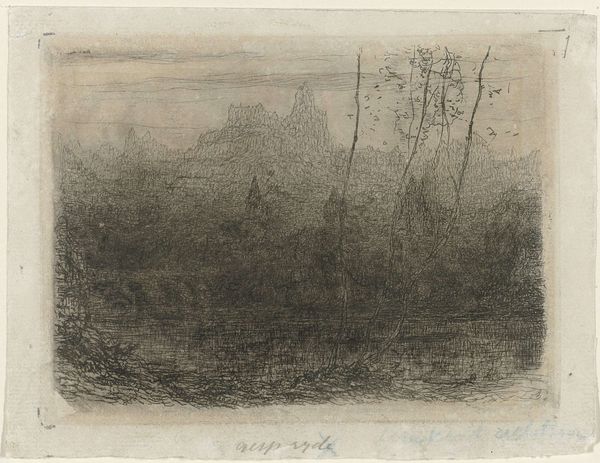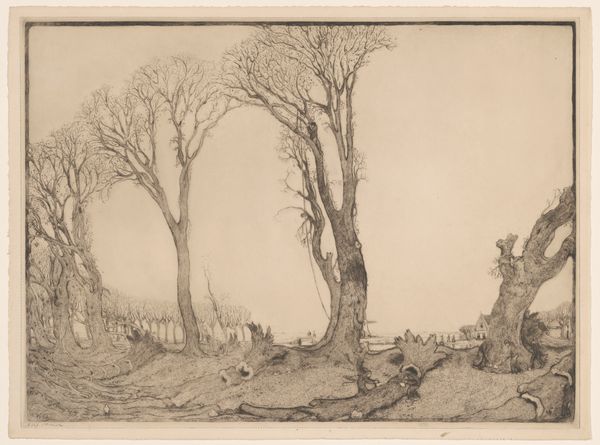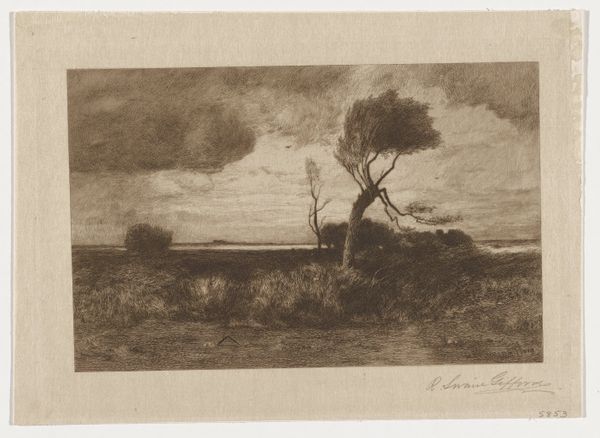
drawing, pencil
#
drawing
#
pencil sketch
#
landscape
#
pencil
#
pencil work
#
modernism
#
realism
Dimensions: height 245 mm, width 340 mm
Copyright: Rijks Museum: Open Domain
Curator: Looking at this piece, I immediately feel a sense of quiet melancholy, like a memory fading at the edges. Editor: That's an interesting way to put it. This drawing, titled "Landschap", which translates to "Landscape," was created in 1929 by Pieter H.J.J. Ras. It's a pencil sketch currently housed here at the Rijksmuseum. Curator: Pencil work always carries a particular intimacy, a directness of hand to paper. The blurred lines here feel so evocative of transience, almost like we are seeing a place filtered through someone's internal state, and it makes me think about how memory can shift and reshape. Editor: You know, the late 1920s were a time of social and economic upheaval leading up to the Great Depression. Could this perceived melancholy be linked to the broader societal mood of uncertainty at the time? Remember, realism and modernism were clashing currents in the art world then, as artists wrestled with representing a rapidly changing world. Curator: It’s so hard to detach any work from its context. The placement of the trees, so spindly and sparse, isolated against that ambiguous background reminds me of cultural anxieties that express feelings of instability. We give symbols like trees different importance across the Western cultures. Are these solitary figures reaching out for support in a landscape reflecting larger societal disquiet? Editor: It's certainly a plausible reading. Landscape art, throughout history, has served as a mirror reflecting humanity’s relationship with nature and often wider socio-political anxieties. Even the choice of a readily available medium like pencil suggests accessibility, aligning art perhaps with a broader public rather than elite patronage during a period where social roles are shifting. Curator: Precisely, and by employing the symbolism embedded within this drawing – the hazy background, the slender, seemingly frail trees –Ras might evoke those subconscious feelings in the observer. What about the political undertones here? Editor: It might reflect some silent observations that give it its strength, despite being so quiet, the scene it portraits might still scream something to us today about those particular struggles for that specific landscape, society, country, etc. What about you? Does any further context on the cultural meaning of trees comes to mind when seeing it? Curator: To my eye, seeing the drawing and feeling these emotional symbols creates continuity with history itself. Editor: Ultimately, “Landschap” leaves us to contemplate not just the scenery, but the cultural moment that birthed it and how it continues to speak across time.
Comments
No comments
Be the first to comment and join the conversation on the ultimate creative platform.
